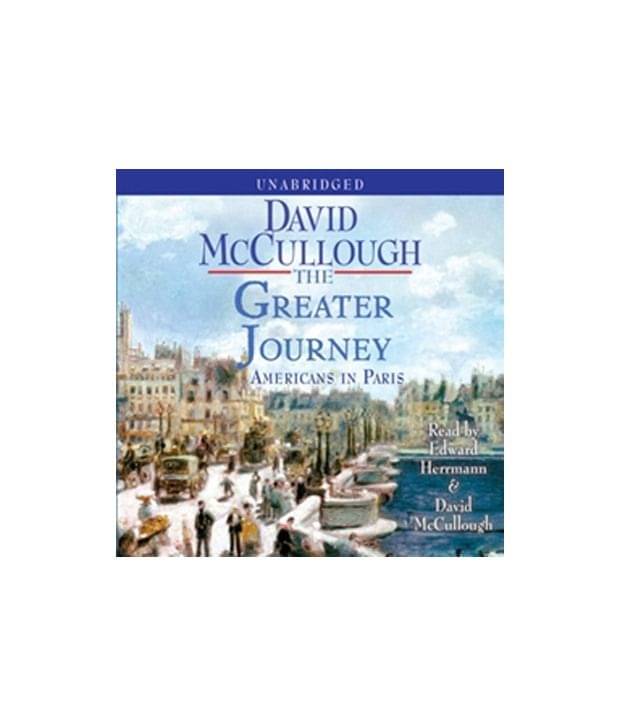
In 1830 as the novelist James Fenimore Cooper was crossing the Atlantic to France, his ship drew alongside an American ship sailing to America. Cooper was asked by a passenger on the other ship where he was going. When he replied, "Paris," the other passenger said, "You'll never come back." He nearly didn't.Cooper would become a fast friend of an American painter, Samuel Morse, who spent his time in the Louvre copying the great masterpieces. Morse would eventually paint his own greatest painting, "The Grand Galerie" of the Louvre, with Cooper cheering him on. But Morse would give up his painting career, and inspired by a signaling system he witnessed outside Paris, would invent the telegraph. Cooper, meanwhile, finished in Paris the works that made his reputation, the final volumes of his Deerslayer series.They were among the first Americans to take up residence in Paris, the city that American statesmen such as Benjamin Franklin, Thomas Jefferson, and John Quincy Adams had praised decades earlier. They would be followed by dozens of other Americans, who made the great journey across the Atlantic by sail so that they could make the even greater journey of the intellect and spirit that the French capital city inspired.David McCullough tells the story of America's love affair with Paris through a handful of major characters -- Cooper and Morse; a little-remembered but then-famous painter named George Healy; Charles Sumner, inspired by the many types of people he found living amiably in Paris to become an abolitionist and outspoken U.S. Senator from Massachusetts; Elihu Washburne, the U.S. Ambassador to France who conducted himself bravely and through his admirable actions won America many admirers during the Restoration, the Franco-Prussian war, and the Commune revolt; and Augustus Saint-Gaudens, the American son of a French father and Irish mother who learned his craft in Paris and became the most celebrated American sculptor of the day.Dozens more Americans traveled to Paris and were influenced to a greater or lesser degree:*Louis Moreau Gottschalk, a pianist from New Orleans, whom Chopin proclaimed the greatest pianist of the age*George Catlin, painter of frontier scenes, who brought a group of Indians to Paris. They became the most talked-about sensation ever, at least until P.T. Barnum arrived with his great discovery "Tom Thumb," the most lucrative performer ever to appear on a Paris stage*Elizabeth Blackwell, the first female doctor in the U.S., who studied medicine in Paris and learned techniques she brought back to America*Mason Warren and Oliver Wendell Holmes, young surgeons who would also bring the latest medical knowledge back to America*Mary Cassatt, who changed her style of painting when she discovered the work of Edgar Degas, who would become her mentor, while she, in turn, would be responsible for the great pioneering collection of French Impressionist painters purchased at her direction by her friends the Havemeyers*Augustus Saint-Gaudens, whose first great monumental sculpture, "Admiral David Farragut," was created in his Paris studio, where he had gone to become a sculptor and where he would befriend Charles McKim and Stanford White, young American architects studying the great buildings of France.And these are only some of the Americans. The Frenchmen include Alexis de Tocqueville, the author of Democracy in America, who would befriend many of the Americans and would become France's minister of foreign affairs during the Second Republic; King Louis-Philippe, who knew and liked many of the Americans. The king had traveled in America, even working as a waiter in an oyster house in Boston, and was fluent in English. He would be forced into exile by the creation of the Second Republic under Prince Louis Bonaparte, who in a coup in 1851 would proclaim the restoration of the monarchy, the Second Empire. Louis Bonaparte's American dentist was the leading figure of the American expatriate community in Paris (and would save the king when he was overthrown following France's humiliating loss in the Franco-Prussian war). By 1900 the center of art and science had shifted west, from France to America.If The Greater Journey has a main character, it is Paris itself. No American seemed immune to its charms (save perhaps the ever-dyspeptic Henry James, who nonetheless set his early novel The American there). The Parisians regarded themselves as different from -- and better than -- other French citizens; they were certainly more cordial to Americans. The Greater Journey is filled with wonderful descriptions of the old Paris before it was re-made by Haussmann's grand boulevards, and of the city's great places, especially the Louvre, the Tuileries, and Notre Dame, which never failed to inspire American visitors and expatriates.The Greater Journey is a masterpiece painted on a huge canvas: Americans and Parisians; revolutions and war; art, medicine, music, literature; and all of it set in the City of Light, a time and place that glow forever.
Learn Anything, Anywhere, Anytime
India's Largest Online Education Marketplace


